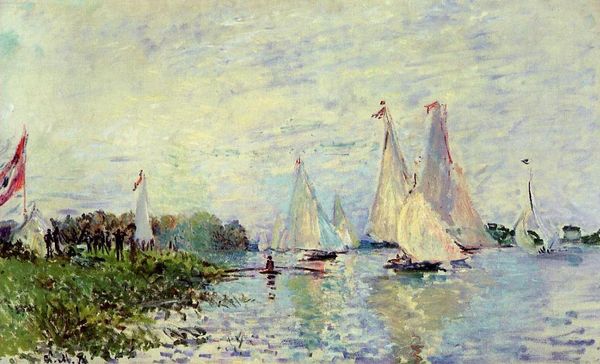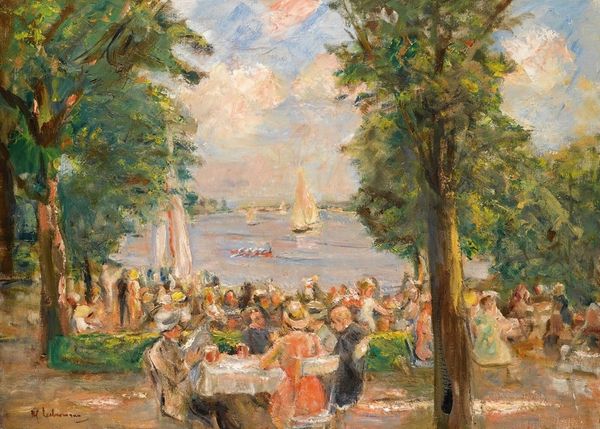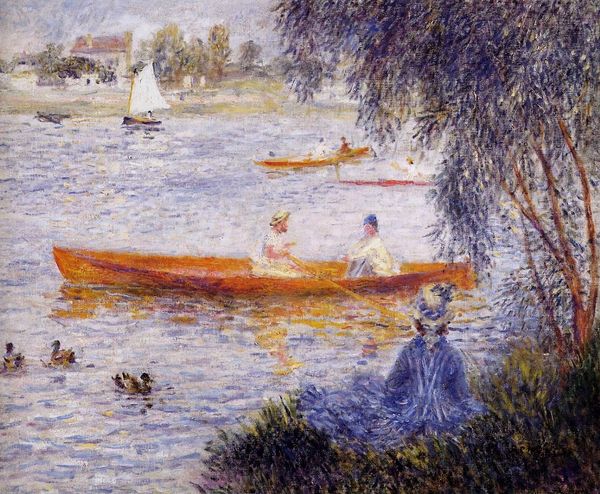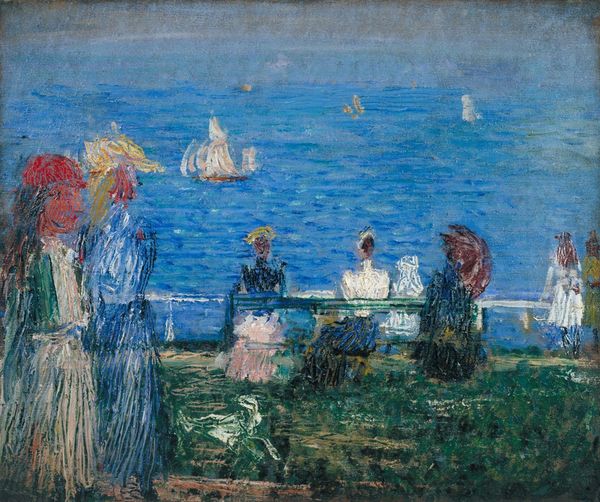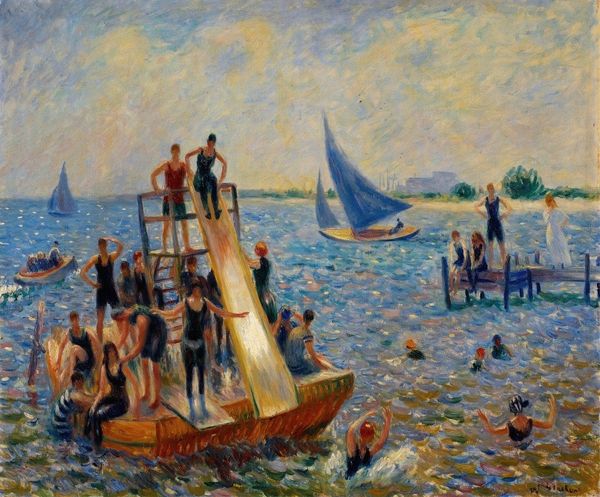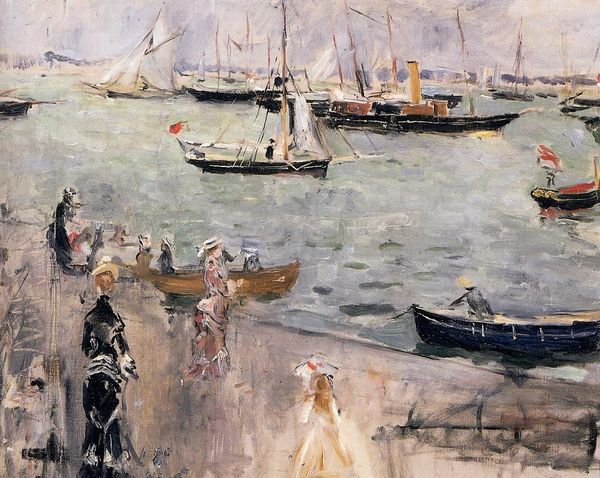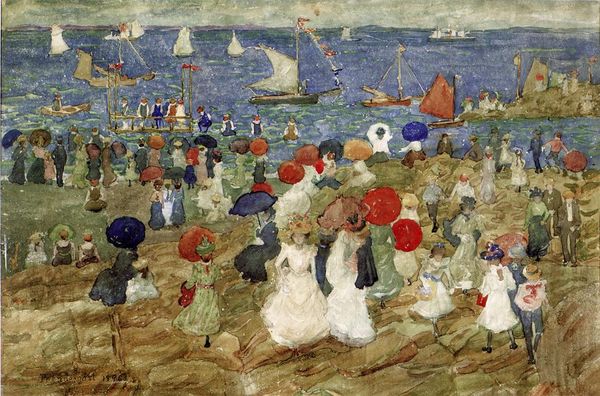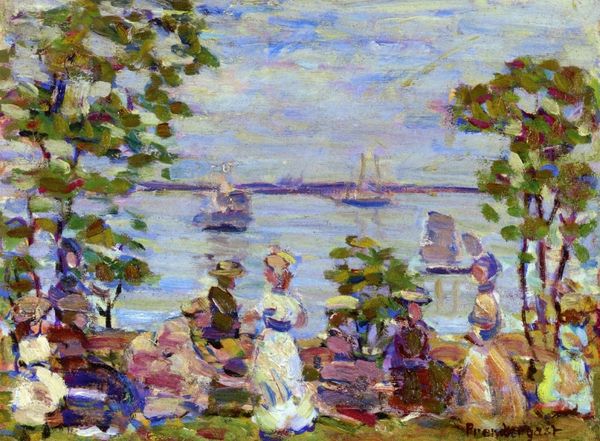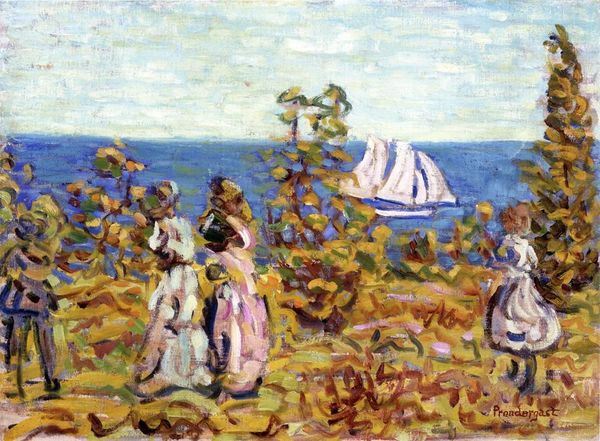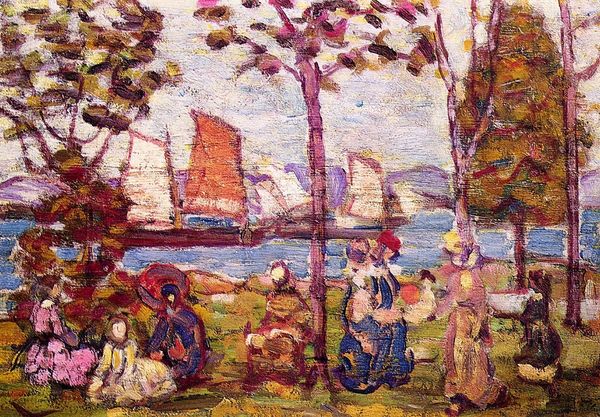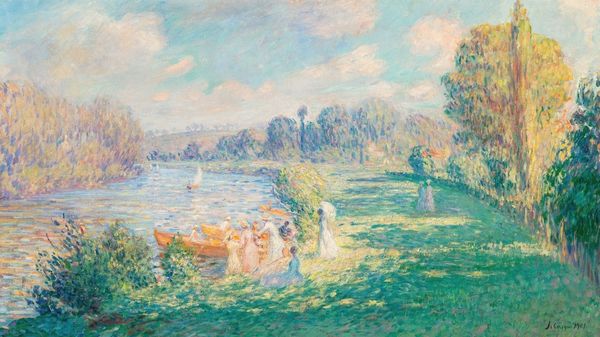
Copyright: Public domain
Curator: What immediately strikes me is the hazy atmosphere; a sort of lazy Sunday afternoon feeling permeates the whole scene. Editor: Precisely. This is "The Yacht Race," painted in 1924 by Max Liebermann. It's rendered with oil on canvas, giving it that wonderful painterly quality. Curator: The yachts, while present, almost fade into the background. They don't possess sharp, defined outlines. They're more like fleeting impressions of sails on water, which directs the focus toward the two figures on the grass. Who do you think those figures are? Editor: The figures become symbolic representations of leisure, tradition, perhaps even the transmission of values. Consider the subtle semiotics of dress – the flowing robes, hats. They're like echoes of bourgeois values, but softened through an impressionistic lens. There’s an implication of belonging, an unconscious inheriting of rituals. Curator: I can definitely see the continuity you mention, with those iconic impressionist strokes – seemingly spontaneous yet carefully constructed, layered with shades of history. The location—somewhere near a cityscape, or a port city—is rendered in a very suggestive way, implying movement. It connects deeply to other paintings about city life from the period, and offers a social narrative. Editor: The chromatic range—greens and whites—almost cancels the boats. The application of paint is indeed very crucial; consider the planes in relation, from up close there is this marvelous tension from the rapid marks, as you move back they coalesce to form space, and figures, depth. Curator: Those rapidly rendered details almost dissolve when you move away from the image; but I find a profound symbolic statement in this impermanence. A scene painted *en plein air,* of ephemeral enjoyment, under overcast sky. In my mind, this becomes emblematic of the transient nature of life itself. Editor: Well said. Liebermann beautifully captures how forms evolve, dissolve, then reconstitute depending on one's viewpoint – a dance of perception in line with the aesthetic values of impressionism. Curator: Overall, I read the entire scene as a contemplative moment about societal life, full of hidden tensions that we might read and analyze indefinitely.
Comments
No comments
Be the first to comment and join the conversation on the ultimate creative platform.
